Brrr….it’s cold outside! This is the time of year when our Great Lakes winter birds are most resourceful. How do these small birds stay warm in such cold temperatures? Where do they find refuge during winter storms? From storing food to undergoing a process known as regulated hypothermia, Great Lakes birds are masters at surviving frigid winters.
We’ve rounded up a list of some of our year-round residents that have adapted to freezing temperatures and snowy landscapes across the Great Lakes region. Learn how they stay warm, how to identify them, and where to spot them this season!
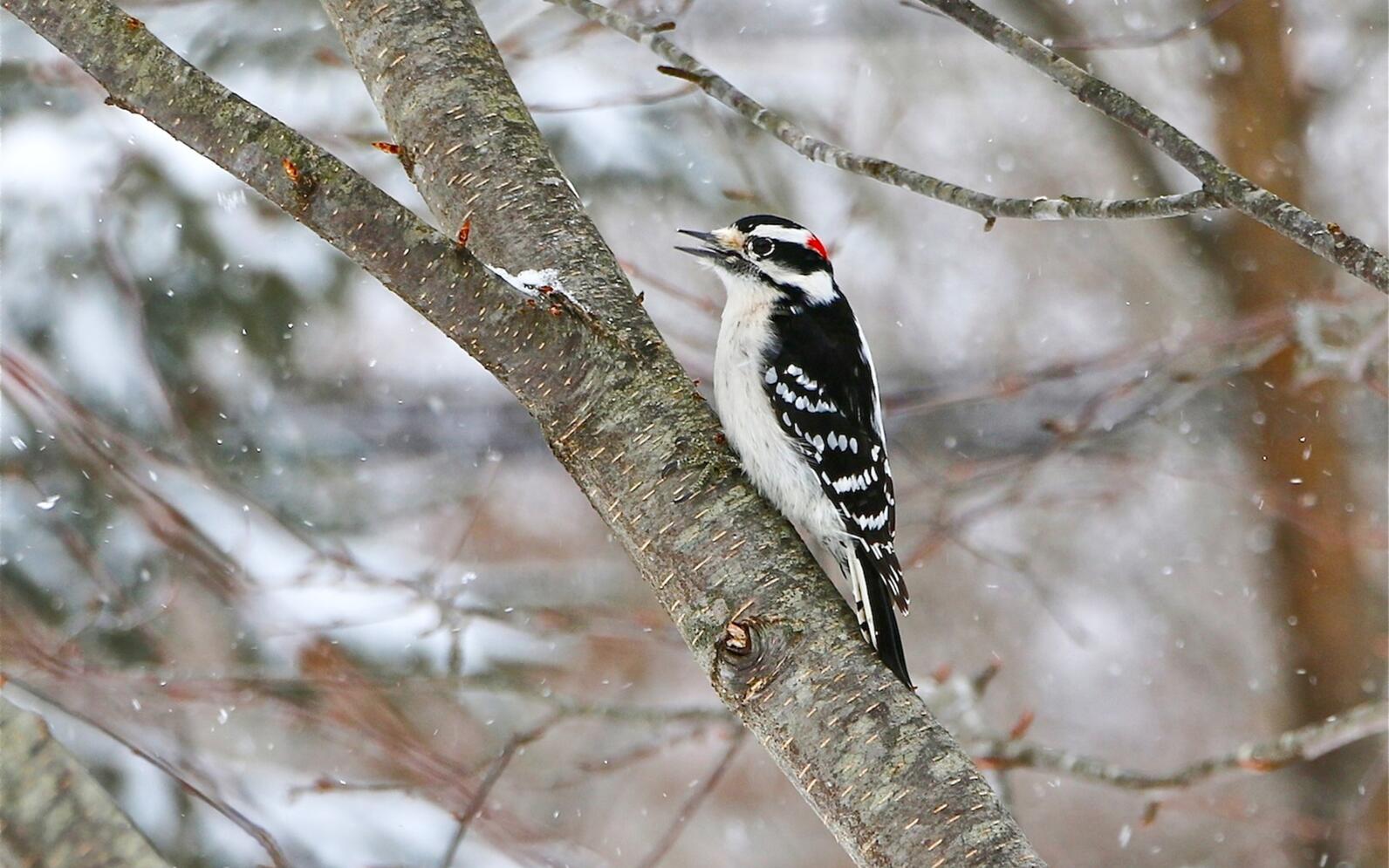
Fun Winter Facts: The Downy Woodpecker’s small size is an advantage in the winter, allowing it to feed on weed stalks as well as in large trees. Downies construct new tree cavities in the fall to roost and keep warm during cold winter nights.
How to ID: This is the smallest woodpecker in North America, between the size of a robin and sparrow. It has a white back, a black and white striped face, and a very short, stubby bill. Male Downys also have a red spot on the nape (back of the neck).

Fun Winter Facts: Storing food helps chickadees late in winter when other food sources are scarce, or trapped under snow or ice. Chickadees visit bird feeders, taking sunflower seeds one at a time and flying away to store them in bark crevices. Chickadees are also experts in shivering andcontract opposing muscle groups to stay warm. This results in less visible jiggling typical of human shivering. They can also control and lower their body temperature to conserve energy at night, entering regulated hypothermia!
How to ID: These small and lively birds have a black cap and bib, gray back, and buff wash on their sides.
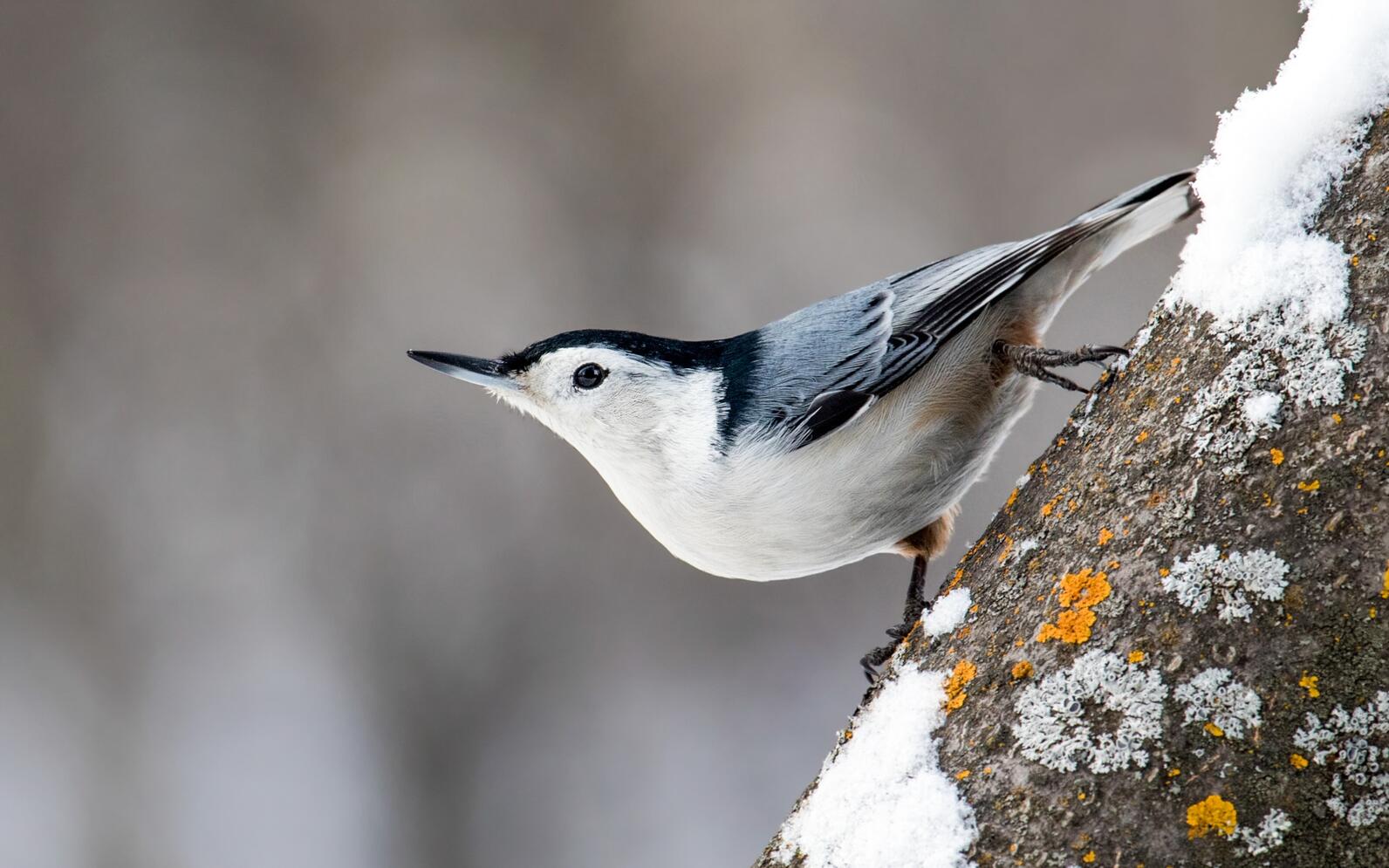
Fun Winter Facts: Similar to the Black-capped Chickadee, White-breasted Nuthatches can be seen industriously carrying seeds away to cache (or store!) for late in the winter. They also roost in tree cavities made by other bird species, like Downy Woodpeckers.
How to ID: These small chunky birds have a short tail and thin bill. Males and females have a white face and chest, with a narrow dark crown stripe (black on males, gray on females) and a gray back.
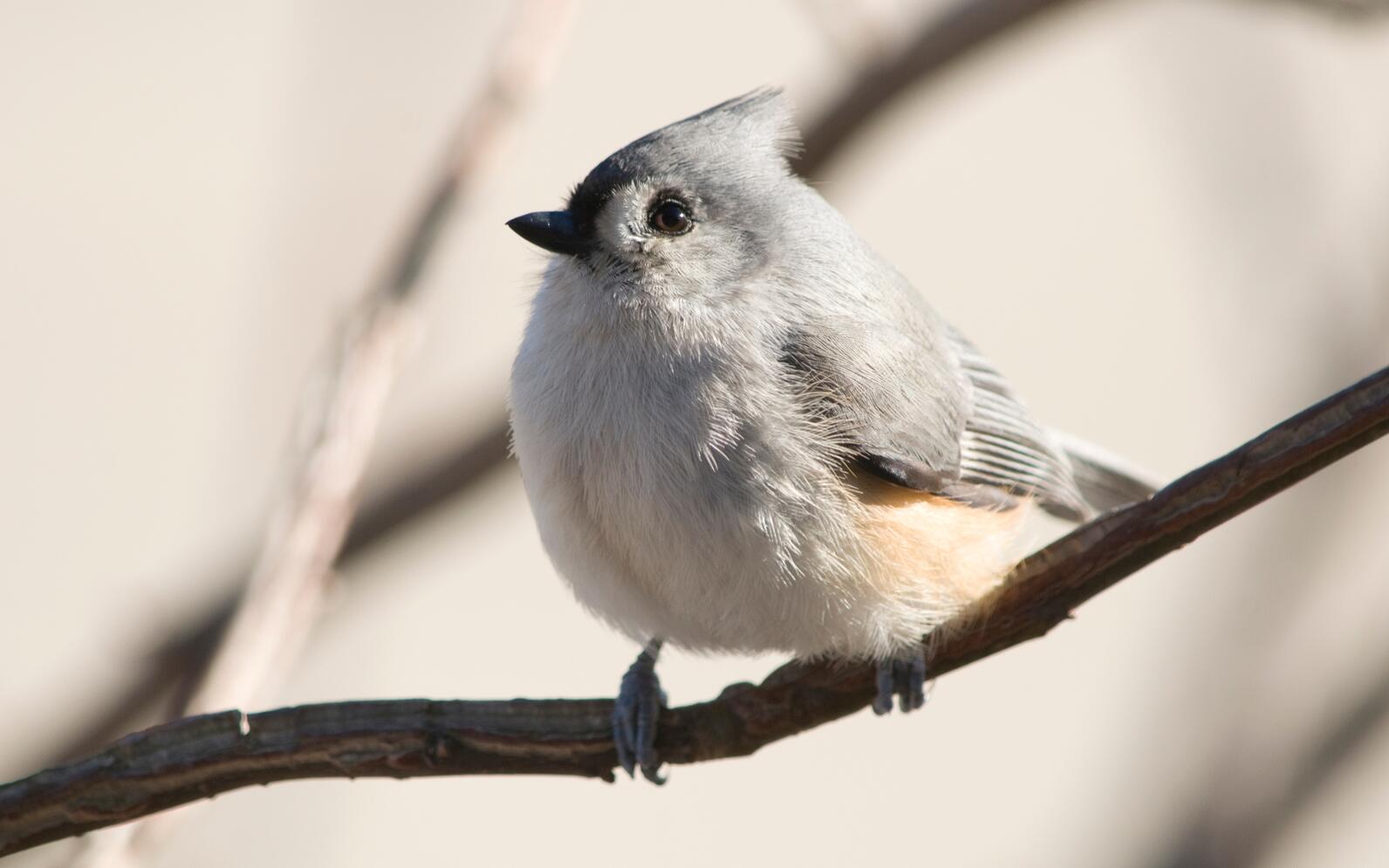
Fun Winter Facts: The Tufted Titmouse is another bird known for storing seeds for later in winter. A growth in the number of backyard bird feeders may be helping these birds to expand their range farther north! Unlike most winter birds, Titmice don’t join mixed flocks and tend to remain in their breeding pair or family group through the winter.
How to ID: This crested little bird has a gray head and back, whitish belly with rusty sides, bold black eyes and a small, short bill.
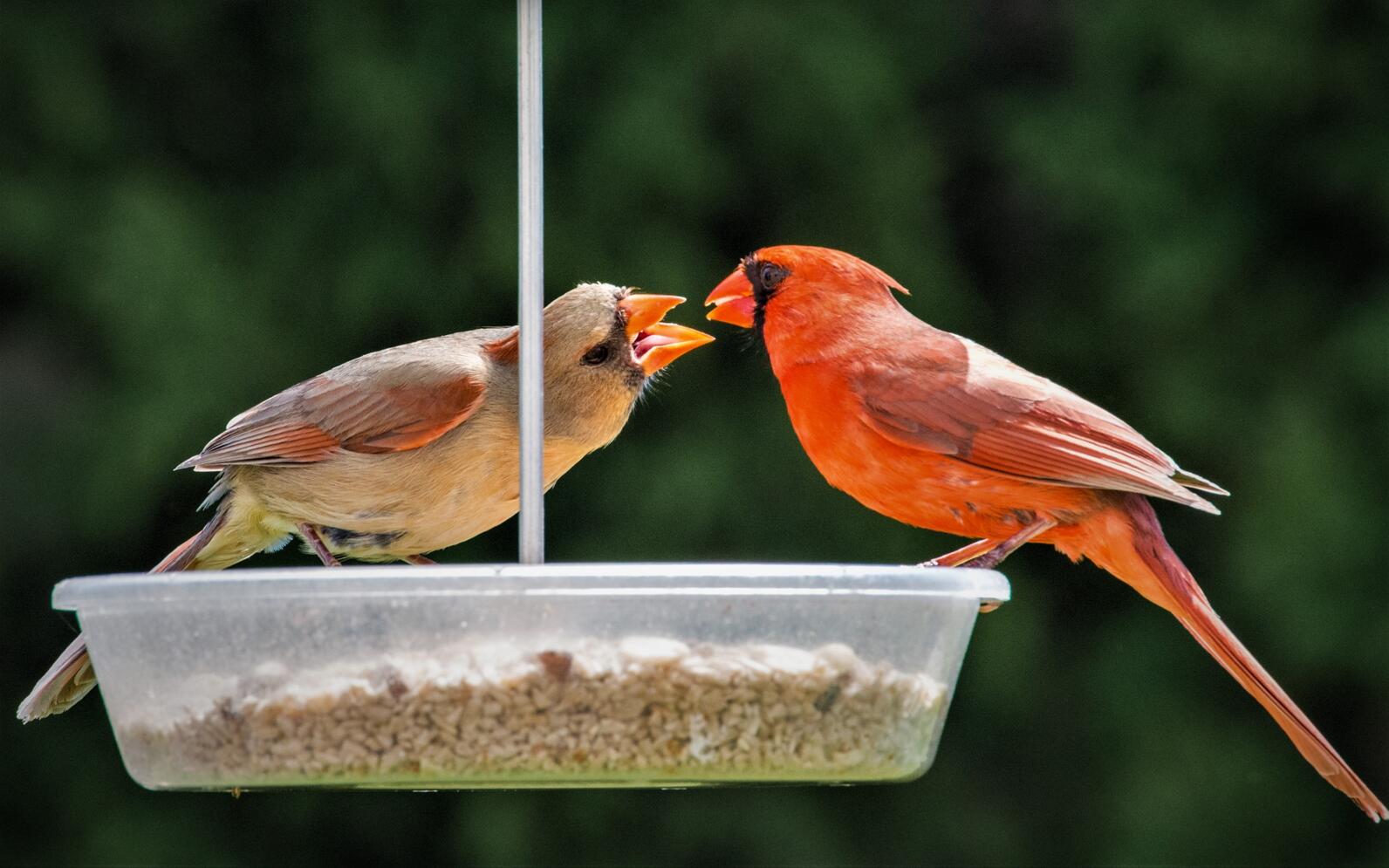
Fun Winter Facts: Like many winter birds, Cardinals can often be seen puffing their feathers out into the shape of a ball to minimize heat loss. Their diet is highly variable, which gives them a greater chance of finding food in the winter. It’s made up of an assortment of insects, plant parts (including leaf buds and flowers), seeds and berries.
How to ID: The male Cardinal is unmistakable, and is our only red bird with a crest. The female is duller in color, but shares the crest, massive pink-orange bill, and the long tail of the male.

Fun Winter Facts: In winter, flocks of American Goldfinch often congregate in weedy fields, at feeders, and while roosting to help keep each other warm and safe from predators. Goldfinches, along with other winter birds, can put on fat as both an insulator and energy source. More than 10 percent of their body weight may be fat in the winter!
How to ID: In winter, male and female Goldfinches lose their bright yellow colors, turning into a yellowish brown to gray. Their wings remain black, with bold white wing bars.
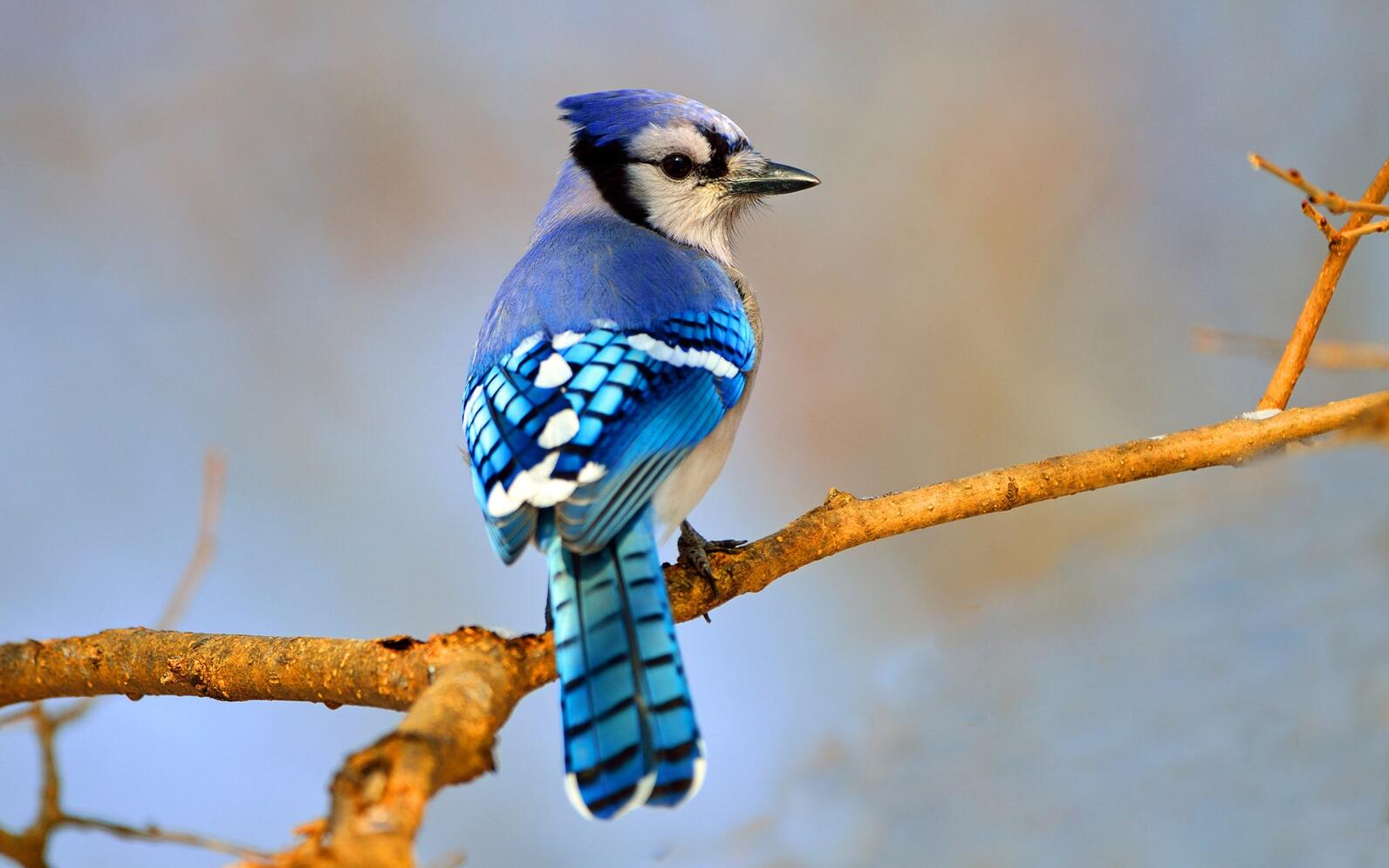
Fun Winter Facts: Like chickadees and nuthatches, Blue Jays cache food in the fall for later in winter, most commonly acorns and beech nuts. To stay warm in extreme temperatures, Blue Jays often seek shelter in dense evergreen foliage. While some migrate, others stay in the region year-round so long as food sources are available.
How to ID: These large crested birds are a dull blue-gray on their back and bright blue on their wings and tail. They sport a black necklace, white wing bars and tail corners.
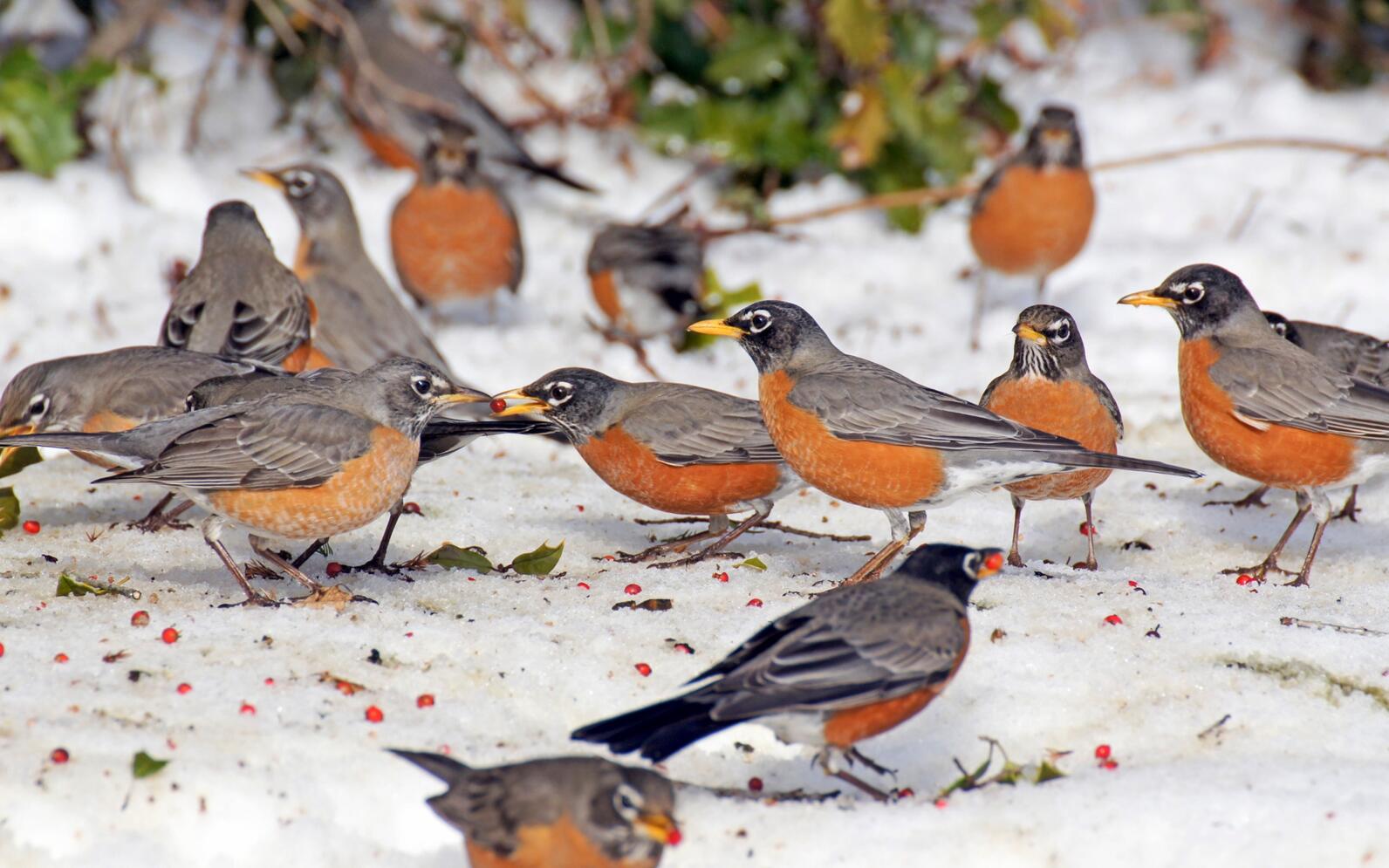
Fun Winter Facts: In winter, robins may gather in flocks of hundreds, concentrating at sources of food, to keep each other warm and safe from predators. While some robins migrate south for winter, some remain in the region year-round, depending on local food supplies, such as fruit-bearing trees and shrubs.
How to ID: This large, common bird has a brick-red chest, gray back, and streaks on a white chin.
Where to find Winter birds across the Great Lakes:
When dressed for the elements, winter can be an exciting time to go birding. Look for these charming birds in forests, woodlands or along woodland edges, grassy and weedy fields, and city and suburban parks and yards.
Go birding at your local public lands, Audubon Important Bird Areas, State Game and Wildlife Areas, and state and city parks. Here are some guides to help plan your next birding trip:
Help Count Winter Backyard Birds
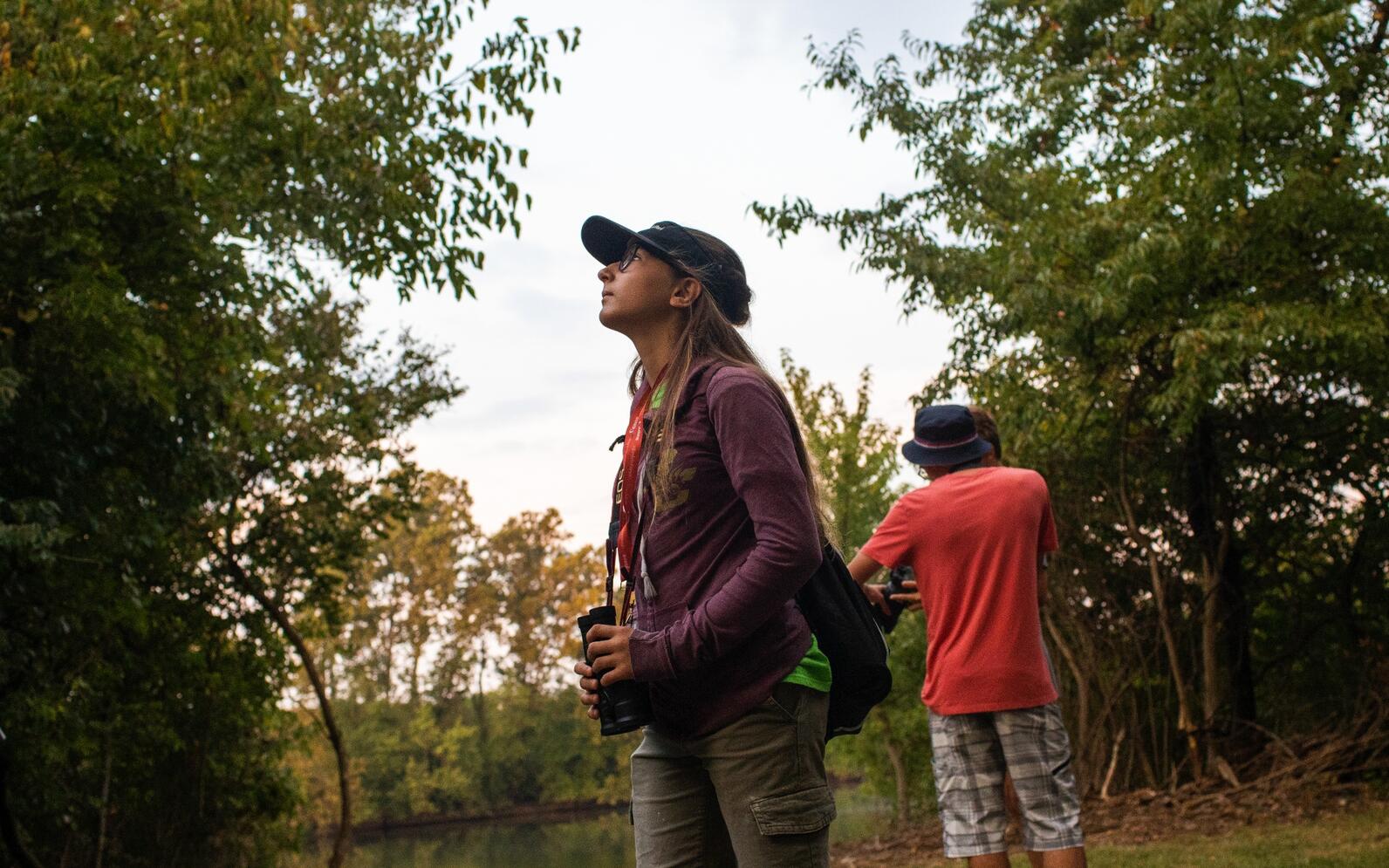
Participate in the upcoming Great Backyard Bird Count this February 16-19! All experience levels are welcome. You can participate for just 15 minutes from the comfort of your home, or from your local public lands. Help count winter birds for science!
Interested in learning how to attract these birds to your space? Check out our latest Winter Bird Feeding 101 blog!








